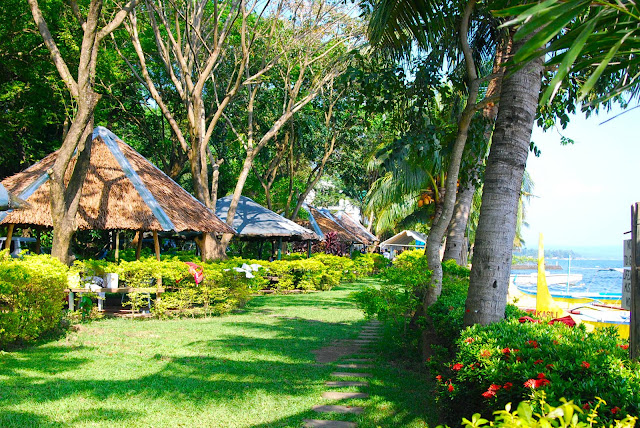Weekenders at the highlands of Tagaytay City are no strangers to the breathtaking view of Taal Volcano, a majestic yet restive volcano nestled within a lake called Taal Lake. Conveniently located about 50 k.m. south of Manila, Taal Lake is all worth the 2-hour drive even on a weekday when one just wants to get away from the hustle and bustle of city life.
A view of the lake atop the highlands gives you a sense of tranquility and soulfulness. But drive down to one of its surrounding towns, Talisay as the most popular, and you will realize that there is more to the tranquil snapshot that the lake offers.
Bing, my husband, and I first explored Taal Lake 5 years ago. Bing’s passion for sailing brought us to Taal. As we drove down a winding road to Talisay, glimpses of the lake’s natural beauty got bigger and clearer as we got closer. The feeling was love-at-first-sight. How could we have ignored this haven after living in this country for so long? Such a beautiful place, a refuge from home, its landscape teeming with life and adventure. Taal is a vast playground for water sports lovers – sailors, windsurfers, kayakers, wake boarders, motorboat aficionados. We reached the end of the winding road and the entry to Talisay, and immediately, we were welcomed by men holding up signs that read, “Boat Ride”. Yup, that’s what we’re here for! We ended up at Taal Lake Yacht Club (TLYC), and the rest is history.
Many resorts line up the lakeshore, but it is TLYC that we frequent the most. Those familiar with the Hobie Cat (a catamaran sailboat) might be interested to know that TLYC is home to the Hobie Fleet 274. A parade of Hobie 16 (16-footer) cats is parked at the club. Bing sails on a 16. I sail on a 16, too, but not as much as Bing does (he’s pretty hardcore J).
TLYC is not your regular fancy boat club – far from fancy, in fact. Tropical, earthly, green – these are more apt descriptions. Picture what greets you when you enter the club: trees, bushes, grass, earth, open nipa huts on old, sturdy guava trunks, dogs, cats. Charming. Here, people morph from their business shoes to slippers. They toss their eau de colognes for Coppertone or Hawaiian Tropic. Folks are as friendly as your first cousin even if some of them are the biggest persons of huge corporations.
Not just for sailors and boat lovers. Tourists come to Taal for the thrill of trekking the volcano, either by foot or by horse. My sons and I went up the crater 3 years ago and the experience was just unforgettably amazing. Everywhere we looked was nature at its most beautiful. We felt embraced by creation; privileged, for this was not your ordinary communion with nature.
And up there at the top of the volcano, it was a sight to behold. I felt like a queen of a lost paradise. When I looked down at the pristine lake at the crater, I understood why Taal Volcano’s crater lake is said to be “a lake within a volcano, within an island, within a lake”. Ripples of yellow sulfur rising from the deep told me that the volcano was very much alive. A forest of lush trees thrived around the perimeter of the volcano’s mouth. A lone eagle, said to have its nest in the forest, hovered above the crater. Miko, my younger son, who was 9 years old at the time, whispered to me in awe, “It’s so pretty here. Thanks for bringing us here, Mama. Can we stay a little longer?”
People come to Taal to play. But for the larger part I think, people are drawn to the lake because they feel a certain connection to her. The lake seems to have feelings and a soul. It is moody; it is turbulent as it is still. Maybe because the lake mirrors one’s deepest mystery that will probably never surface for others to see. Tales have it that towns are submerged deep underwater, caused by many of the volcano’s violent eruptions in the past. Local folks believe in a myth of mermaids and mermen who take a mortal life every year. Yes, some things lurk beneath the lake, be it past lives or living creatures. The tawilis, the only freshwater sardine in the world, and maliputo, a freshwater jack, are endemic to Taal Lake. Fishpens of cultured tilapia are a fixture of maze at some parts of the lake. And sometimes, on a stroke of luck, freshwater sea snakes or turtles startle you from nowhere.
Dusk at Taal Lake is my favorite time. When the big boys and girls are done playing and are back on shore, when the water glimmers in orange and the local fishermen start to pump their fishing boats and cast their nets for a catch of tawilis, that’s when the lake is most enchanting. I stare at her art and she speaks to me her poetry.
About the author:
Milet Tendero works as an Assistant to the Dean of the School of Social Sciences at the Ateneo De Manila University. She lives in Loyola Heights with her spouse, Bing, and their two boys, Pio and Miko. Milet and I hung out together in high school with our choir and classmates in the Philippines.
About the author:
Milet Tendero works as an Assistant to the Dean of the School of Social Sciences at the Ateneo De Manila University. She lives in Loyola Heights with her spouse, Bing, and their two boys, Pio and Miko. Milet and I hung out together in high school with our choir and classmates in the Philippines.
Taal Lake Yacht Club
Philippine Bangka
Hobie Sailors




No comments:
Post a Comment